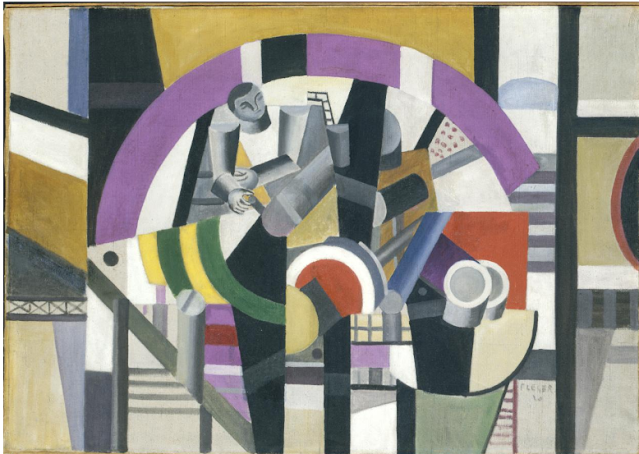Robert Delaunay, "Rhythmes"
This is one of those paintings I was attracted to the minute I saw it. Let me tell you why. The artist is Robert Delaunay (1885-1941) and this is a late work of his, painted in 1934. If you have any knowledge of modern art, you may know there was a movement in the 1960's called Op Art where artists attempted to create optical illusions with dramatic graphic designs. This painting is not one of those, but almost a step before it. I find the design amazing. Notice how the line dividing the circles is skewed to the left side of the canvas, starting below the frame but ending top right just before the end is reached. This gives the feeling this row of circular shapes is a long series, much larger below us and we only see the very top.
I have found painting color outside the confines of realism difficult. Discovering and creating shades that compliment or create the desired objective is achieved by long study and experimentation. Delaunay built his career on it. Notice here, the only reasonably true primary color is the yellow in the center, while most others are mixed shades/tints; plus there is a nice range of values, from light tones to dark. What does create the amazing "pop" are the three bright black/white circles.
When looking very close at the painted surface some brushwork is visible, and just a little distortion. I appreciate this because it proves this painting was human made, not machine. So my final comment is about the large beige area. I am quite sure this is painted, as I see ripples, but no sign of bare weave. What do you think?
Robert Delaunay painted "Rhythmes" (this is the French spelling) in 1934 after a long career of developing his unique philosophy of color theory. He believed color had its own power of expression and form. This week's painting is one of his "simplest", and yet, I believe most powerful.
"Rhythmes" is an oil on canvas. It is part of the permanent collection of the Centre George Pompidou, Paris France. It measures 57 x 44.5 inches and was painted in 1934.




I find this painting stunning and strong, even in it's simplicity. He composed the circles in an unusual way and the color choices make it quite dramatic. The plain beige background really make the black and white stand out. I'm guessing it is done on a textured surface he created on the canvas before he started the painting. The composition starts below our view, but it stops before going off the canvas, so we too, must stop and look!! Simple framing seems appropriate. It would brighten any area. I like it a lot!!
ReplyDelete